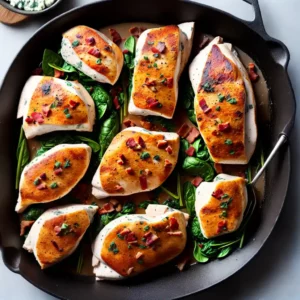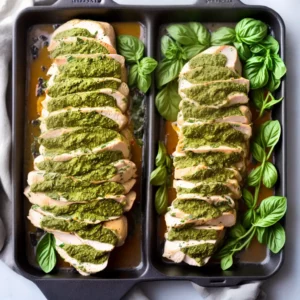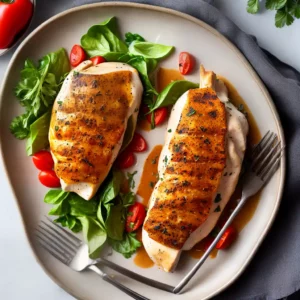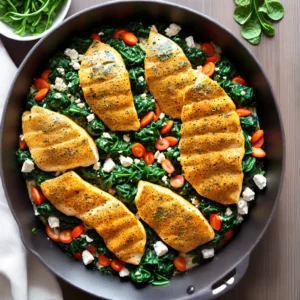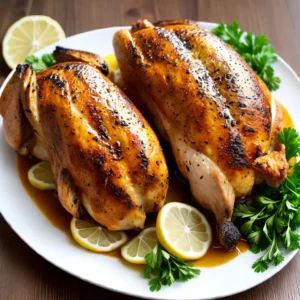How Many Milliliters in a Cup
Curious to know how many milliliters are in a cup? In this measurement conversion guide, I’ll walk you through the process of converting between milliliters and cups with ease, helping you become a master in the kitchen!
Key Takeaways – How Many Milliliters in a Cup:
- There are 237 milliliters in a cup in American English.
- The cup measurement, a unit of volume, was introduced in the United States in 1896 by Fannie Farmer.
- Handy conversion charts are available for converting between metric measurements and cups or fluid ounces.
- U.S. liquid cups differ from U.S. dry cup measurements, with dry ingredients measured using dry measuring cups.
- Cup measurements vary between the United States, the United Kingdom, and other countries.
Understanding Cup Measurements
Before we dive into the conversion process, let’s first understand what cup measurements are and why they are essential in cooking and baking. In recipes, the term “cup” refers to a unit of volume used to measure both liquid and dry ingredients. It provides a standardized way to ensure accurate measurements and consistent results.
When it comes to liquid ingredients, such as water, milk, or oil, cup measurements are used to determine the required amount. The use of cups simplifies the process, as most households have measuring cups readily available in their kitchens. Whether you’re making a soup, sauce, or a refreshing drink, the precise measurement of liquid ingredients is crucial for achieving the desired taste and texture.
For dry ingredients, such as flour, sugar, or spices, cup measurements are equally important. Using the correct amount of these ingredients can significantly impact the outcome of your recipe. Too much flour can make your baked goods dense and dry, while too little sugar can result in a bland dessert. By measuring dry ingredients accurately with a standardized cup, you can ensure consistent results every time.
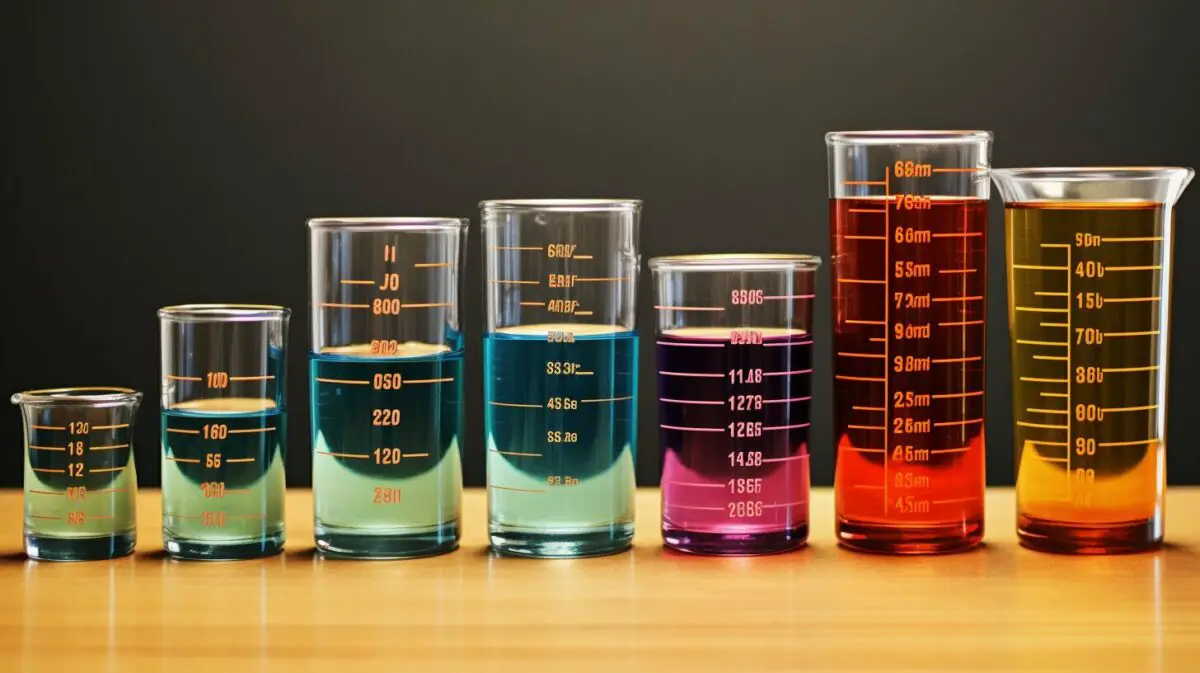
Understanding cup measurements is especially valuable when using international recipes. Many countries rely on the metric system of measurement, where milliliters and grams are commonly used. By converting these metric measurements to cups or fluid ounces, you can easily follow and adapt international recipes to suit your preferences.
In the next section, we will explore the history behind cup measurements and their introduction in the United States. Stay tuned to learn more about this essential unit of volume and how it has become a staple in kitchens worldwide.
The Origin of Cup Measurements
The concept of cup measurements can be traced back to the late 19th century with its introduction in the United States by Fannie Farmer, a renowned chef and cookbook author. Farmer revolutionized cooking and baking by popularizing the use of cups as a unit of volume in American recipes. Her influential cookbook, “The Boston Cooking-School Cook Book,” published in 1896, included standardized measurements using cups, which quickly gained widespread acceptance.
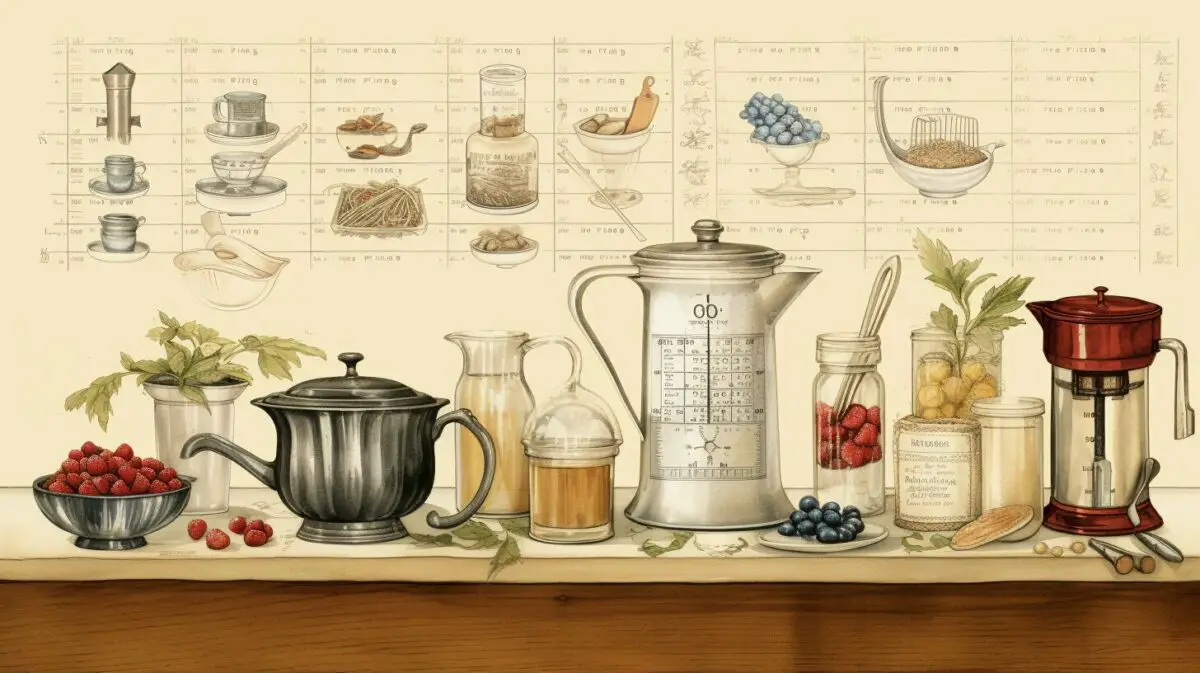
Farmer’s use of cups as a measurement unit provided a convenient and consistent way for home cooks to follow recipes accurately. Prior to her cookbook, recipes often relied on imprecise measurements such as “a teacup” or “a handful.” Farmer’s innovative approach transformed the way recipes were written and executed, making it easier for people to recreate dishes with consistent results.
Today, cup measurements have become an integral part of the American culinary tradition and are widely used in cookbooks, recipe websites, and kitchen activities. The standardization of cup measurements has not only simplified recipe preparation but has also facilitated the exchange of recipes across generations and cultures. It’s a testament to Farmer’s culinary expertise and her significant contributions to the field of home cooking.
Cup Measurements in International Recipes
Cup measurements come in handy when trying out international recipes that use the metric system, and having conversion charts can make the process seamless. As many countries utilize the metric system of measurement, it is important to be able to convert between metric measurements and cups or fluid ounces accurately. Handy conversion charts act as a valuable tool in the kitchen, ensuring that your recipe measurements are spot on.
When exploring international recipes, you may come across measurements in milliliters or grams, which can be unfamiliar if you are used to using cups. By referring to a conversion chart, you can easily determine the equivalent measurement in cups or fluid ounces, allowing you to follow the recipe with confidence.
To make things even simpler, here’s a handy conversion chart for common metric measurements to cups:
| Metric Units | Cups |
|---|---|
| 5 mL | 0.02 cups |
| 15 mL | 0.06 cups |
| 30 mL | 0.13 cups |
| 60 mL | 0.25 cups |
| 120 mL | 0.5 cups |
| 240 mL | 1 cup |
With this conversion chart, you can easily adapt any recipe to suit your preference for cup measurements. No more confusion or guesswork in the kitchen – simply refer to the chart and confidently embark on your culinary adventures!
So, the next time you come across an enticing international recipe, don’t let unfamiliar metric measurements discourage you. Armed with handy conversion charts, you can confidently cook and bake using cup measurements, no matter where in the world your recipe originates from.
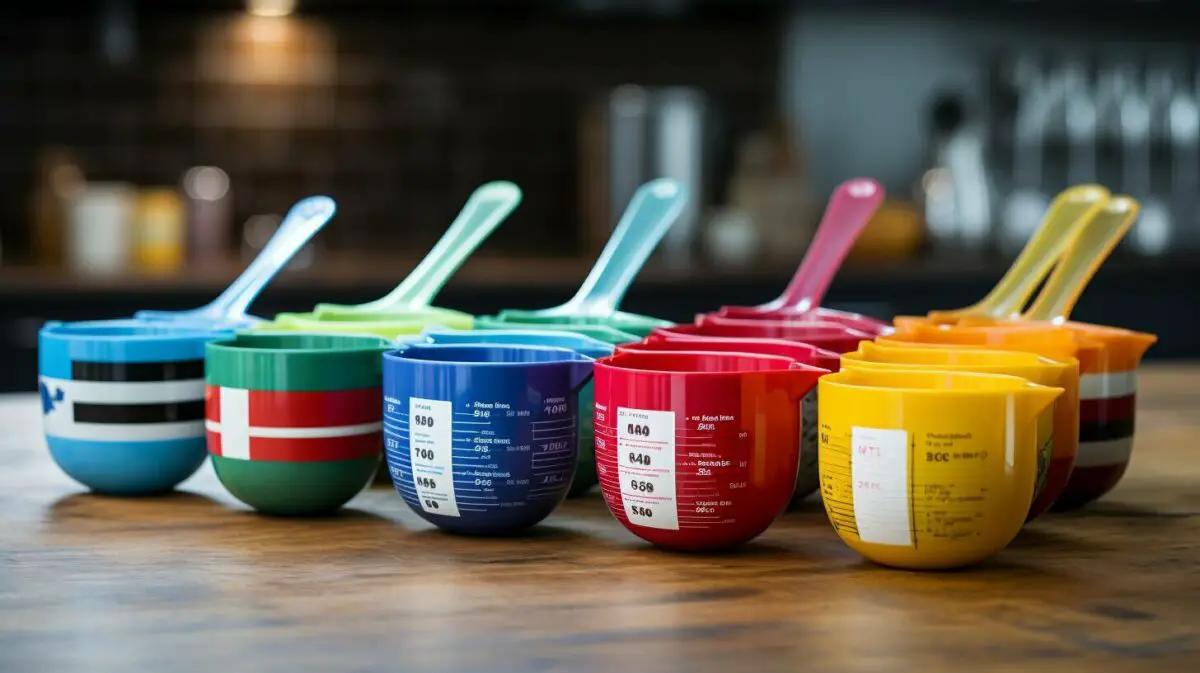
It’s important to note that there is a distinction between U.S. liquid cups and U.S. dry cups, particularly when it comes to measuring dry ingredients. U.S. liquid cups are used for measuring liquid ingredients, such as water, milk, or oil. On the other hand, U.S. dry cups are specifically designed for measuring dry ingredients, such as flour, sugar, or grains.
When using U.S. liquid cups, the measurement is based on the volume of the liquid. The markings on the cup indicate the volume in fluid ounces, which can then be converted to milliliters. A standard U.S. liquid cup typically holds 8 fluid ounces, equivalent to approximately 236.5 milliliters.
However, when it comes to U.S. dry cups, the measurement is based on the weight of the dry ingredients. It is essential to use the correct measuring cups for dry ingredients to ensure accurate results in recipes. Dry measuring cups are designed with straight edges and have the capacity to hold the specific weight of dry ingredients, without compressing or packing them down.
To accurately measure dry ingredients, the cup should be filled, and any excess should be leveled off with a straight edge, such as the back of a knife. This ensures that the proper amount of dry ingredient is used in the recipe, as too much or too little can affect the outcome.
| U.S. Liquid Cups | U.S. Dry Cups |
|---|---|
| Used for measuring liquid ingredients | Used for measuring dry ingredients |
| Volume-based measurement | Weight-based measurement |
| Markings indicate fluid ounces | No specific markings for weight |
| Standard U.S. liquid cup holds 8 fluid ounces (236.5 milliliters) | Properly filled and leveled |
So, whether you’re measuring liquid or dry ingredients, be sure to use the appropriate cups to achieve accurate results in your recipes. Understanding the distinction between U.S. liquid cups and U.S. dry cups is key to successful cooking and baking adventures in the kitchen.
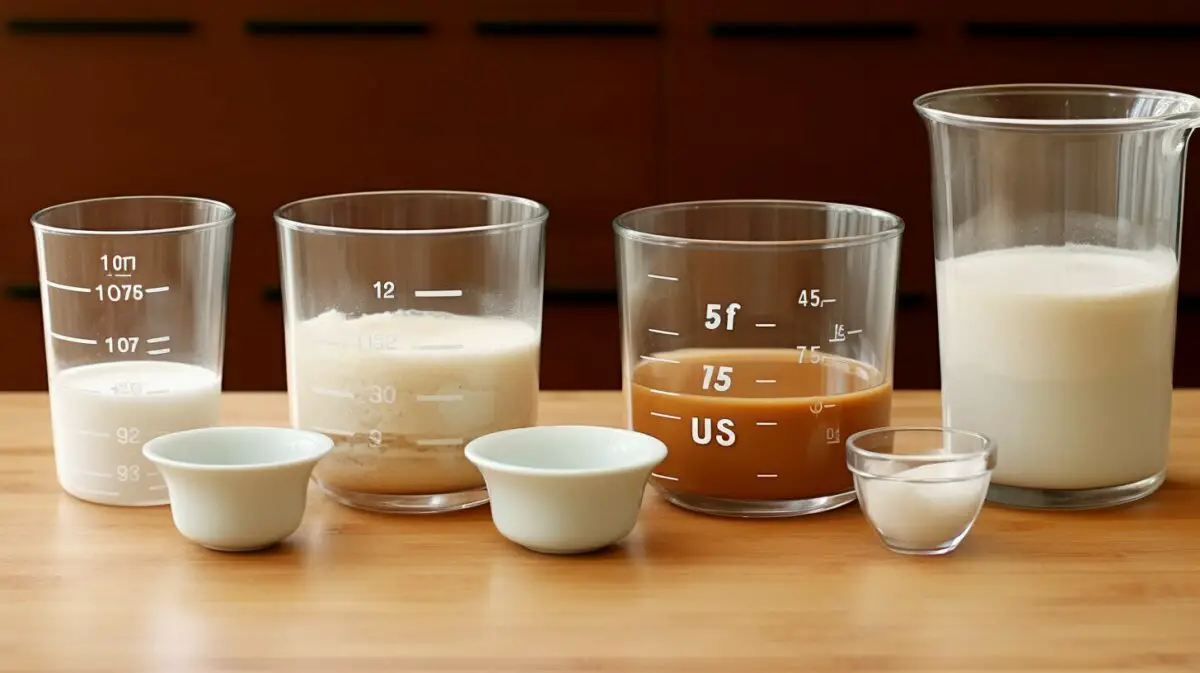
Cup measurements may vary from country to country, and understanding these differences can be crucial when following recipes from different regions. In the United States, a cup typically refers to 8 fluid ounces or 237 milliliters. However, if you venture across the Atlantic to the United Kingdom, you’ll find that their cup measurement is slightly different, equating to 10 fluid ounces or around 284 milliliters. These disparities in cup measurements can lead to inaccurate results if not taken into account.
To illustrate the variations further, let’s take a closer look at the differences between the cup measurements in the United States and the United Kingdom. In the United States, a standard measuring cup typically measures 1 cup (8 fluid ounces), 1/2 cup (4 fluid ounces), 1/3 cup (2.7 fluid ounces), 1/4 cup (2 fluid ounces), and so on. On the other hand, in the United Kingdom, a standard measuring cup commonly comes in sizes of 1 cup (10 fluid ounces), 1/2 cup (5 fluid ounces), 1/4 cup (2.5 fluid ounces), and so forth.
When adapting recipes from one country to another, it is essential to convert the measurements accurately. Handy conversion charts or online tools can be helpful resources in converting between different cup measurements or converting cups to milliliters. These tools provide convenient conversion ratios that ensure you achieve the desired outcomes in your culinary creations. By understanding the variations in cup measurements and utilizing the correct conversions, you can confidently explore recipes from around the world without worrying about inconsistent results.
| Country | Cup Measurement | Fluid Ounces | Milliliters |
|---|---|---|---|
| United States | 1 cup | 8 fl oz | 237 ml |
| United Kingdom | 1 cup | 10 fl oz | 284 ml |
Summary:
- Cup measurements can vary from country to country, such as the United States and the United Kingdom.
- In the United States, a cup is typically equal to 8 fluid ounces or 237 milliliters.
- In the United Kingdom, a cup is commonly equivalent to 10 fluid ounces or around 284 milliliters.
- When adapting recipes, it is crucial to convert cup measurements accurately using conversion charts or online tools.
- Understanding and accommodating these differences will ensure consistent and accurate results in your cooking and baking endeavors.

A standard U.S. liquid measuring cup holds 8 fluid ounces, which is equivalent to 236.5 milliliters of liquid. This essential kitchen tool is used to measure liquids accurately for various recipes. Whether you’re making a refreshing lemonade or a savory sauce, having a reliable measuring cup is a must.

When using a U.S. liquid measuring cup, it’s important to pour the liquid up to the desired measurement line, taking care not to exceed it. The cup typically features clear markings for both fluid ounces and milliliters, making it easy to measure liquids precisely.
With a sturdy handle and a spout for easy pouring, the U.S. liquid measuring cup is designed for convenience and accuracy. Its transparent construction allows you to see the liquid level clearly, ensuring precise measurements every time. Whether you’re a seasoned chef or a beginner in the kitchen, this trusty tool will help you achieve delicious results.
Why Use a U.S. Liquid Measuring Cup?
A U.S. liquid measuring cup is the standard tool for liquids in American recipes, providing consistent and reliable measurements. It simplifies the process of converting between fluid ounces and milliliters, allowing you to follow recipes accurately. By using a U.S. liquid measuring cup, you can confidently create flavorful dishes without worrying about incorrect measurements.
So the next time you’re preparing a recipe that calls for liquid measurements, reach for your U.S. liquid measuring cup. It’s an essential tool that will help you achieve culinary success.
Conversion Cheat Sheet
To simplify your measurement conversions, here’s a helpful cheat sheet to quickly convert between cups, milliliters, and fluid ounces.
| Cup | Milliliters | Fluid Ounces |
|---|---|---|
| 1 | 237 | 8 |
| 1/2 | 118.5 | 4 |
| 1/3 | 79 | 2.7 |
| 1/4 | 59 | 2 |
Whether you’re following a recipe from another country or simply need to convert measurements accurately, this cheat sheet will be your go-to resource in the kitchen. You can easily determine the equivalent measurements for cups, milliliters, and fluid ounces without any hassle.
Remember, 1 cup is equal to approximately 237 milliliters or 8 fluid ounces. This conversion is important for using international recipes, as many countries utilize the metric system of measurement. By referring to this cheat sheet, you can ensure your measurements are precise and achieve the desired results in your culinary creations.
Next time you’re in the kitchen and need to convert between cups, milliliters, and fluid ounces, keep this cheat sheet handy for quick and accurate measurement conversions. Happy cooking!

Converting milliliters to cups is a straightforward process, and I’ll show you step-by-step how to do it, whether you need to increase or decrease your measurements. When you come across a recipe that lists ingredients in milliliters, and you’re more comfortable working with cups, it’s essential to have a reliable conversion method at hand.
To increase milliliters to cups, simply divide the number of milliliters by 237. For example, if you have 710 milliliters, divide it by 237 to get approximately 3 cups. On the other hand, if you need to decrease cups to milliliters, multiply the number of cups by 237. For instance, if a recipe calls for 4 cups, multiply 4 by 237 to get 948 milliliters.
Remember, accurate measurements are crucial in cooking and baking, as they can significantly impact the outcome of your recipes. To help you with these conversions, here’s a handy table that shows common milliliter to cup conversions:
| Milliliters | Cups |
|---|---|
| 60 | 1/4 cup |
| 120 | 1/2 cup |
| 240 | 1 cup |
| 480 | 2 cups |
| 960 | 4 cups |
Having an understanding of milliliters and cup conversions allows you to confidently navigate through recipes from around the world, making your cooking experiences more enjoyable and successful. Whether you’re following a recipe that uses the metric system or adapting a recipe to suit your preferred measurement units, knowing how to convert milliliters to cups is a valuable skill for any home cook. So don’t hesitate to give it a try and unleash your culinary creativity!
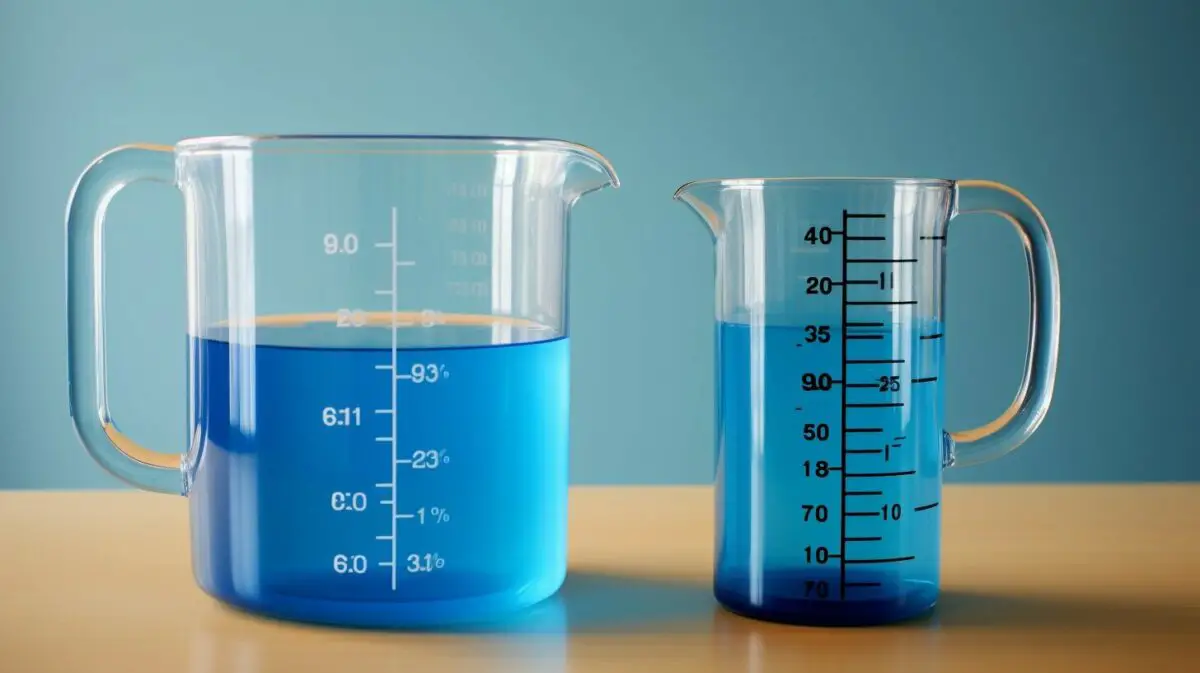
If you encounter a recipe that requires a different cup size than what you have, don’t worry—I’ll guide you on how to adapt the measurements to achieve the perfect outcome. Adapting recipes is a common occurrence in the kitchen, especially when dealing with international recipes or using different types of measuring cups.
To adapt a recipe for a different cup size, you’ll need to understand the conversion ratios. For example, if a recipe calls for 1 cup, which is equivalent to 237 milliliters, but you only have a ½ cup measuring cup, simply divide the required amount by 2. This means you’ll need ½ cup or 118.5 milliliters.
Pro Tip: If you have a recipe that requires a larger cup size than what you have on hand, such as 1 ½ cups, you can use a combination of smaller cups. In this case, you can use 1 cup + ½ cup to achieve the required measurement.
Remember, when adapting recipes for different cup sizes, it’s essential to maintain the correct ratios of ingredients to ensure the desired taste and texture. By following these simple guidelines, you can confidently adapt recipes to suit your available cup sizes without compromising on flavor.
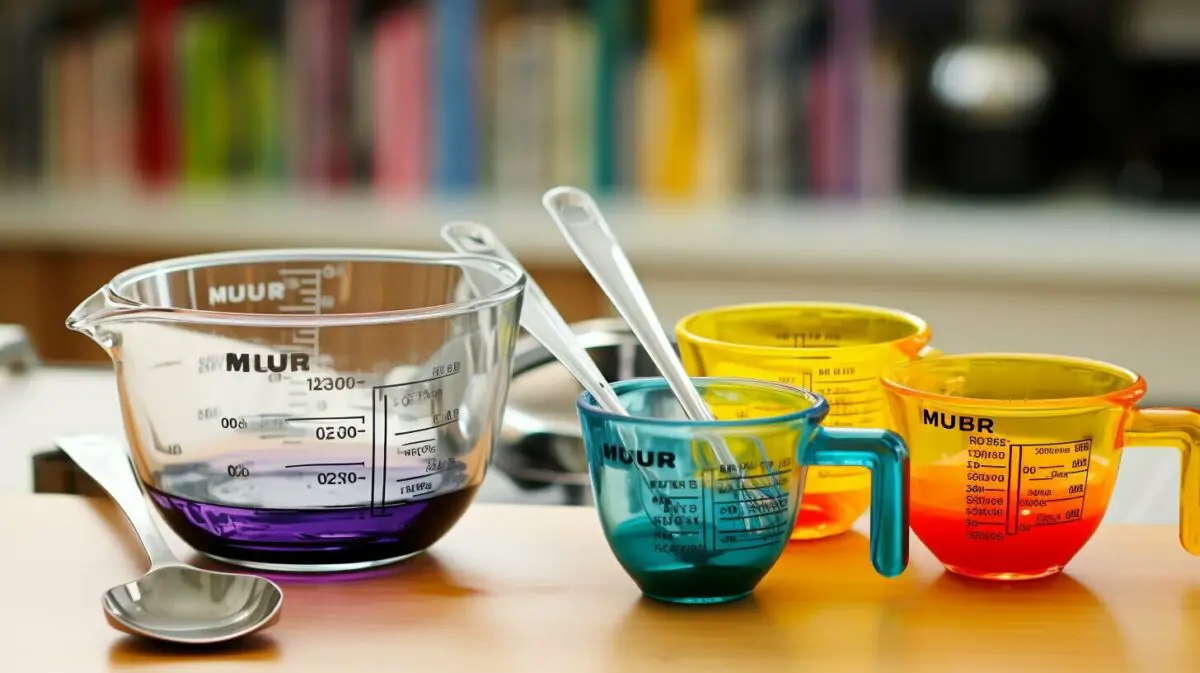
| Cup Size | Milliliters |
|---|---|
| 1/4 cup | 59.15 ml |
| 1/3 cup | 78.85 ml |
| 1/2 cup | 118.3 ml |
| 2/3 cup | 157.7 ml |
| 3/4 cup | 177.4 ml |
| 1 cup | 237 ml |
Converting Cups to Milliliters
Need to convert cups to milliliters? Whether you’re dealing with decimal or fractional cup measurements, I’ll provide you with easy techniques to achieve accurate conversions. When converting decimal cup measurements, the process is straightforward. Simply multiply the number of cups by 237 to obtain the equivalent in milliliters.
For example, if you have 2.5 cups of liquid, the conversion would be: 2.5 cups x 237 milliliters = 592.5 milliliters. This method works well for precise measurements.
When dealing with fractional cup measurements, converting to milliliters can be a bit trickier. To make accurate conversions, it is helpful to have a conversion chart or a table that shows common fractional cup measurements and their corresponding milliliter equivalents.
Here is a simple conversion table to assist you:
| Decimal Cups | Fractional Cups | Milliliters |
|---|---|---|
| 0.25 | 1/4 | 59 |
| 0.33 | 1/3 | 78 |
| 0.5 | 1/2 | 118 |
| 0.66 | 2/3 | 157 |
| 0.75 | 3/4 | 177 |
By referring to this table, you can easily convert fractional cup measurements to milliliters. For example, if a recipe calls for 3/4 cup of milk, you can find that it is equivalent to approximately 177 milliliters.
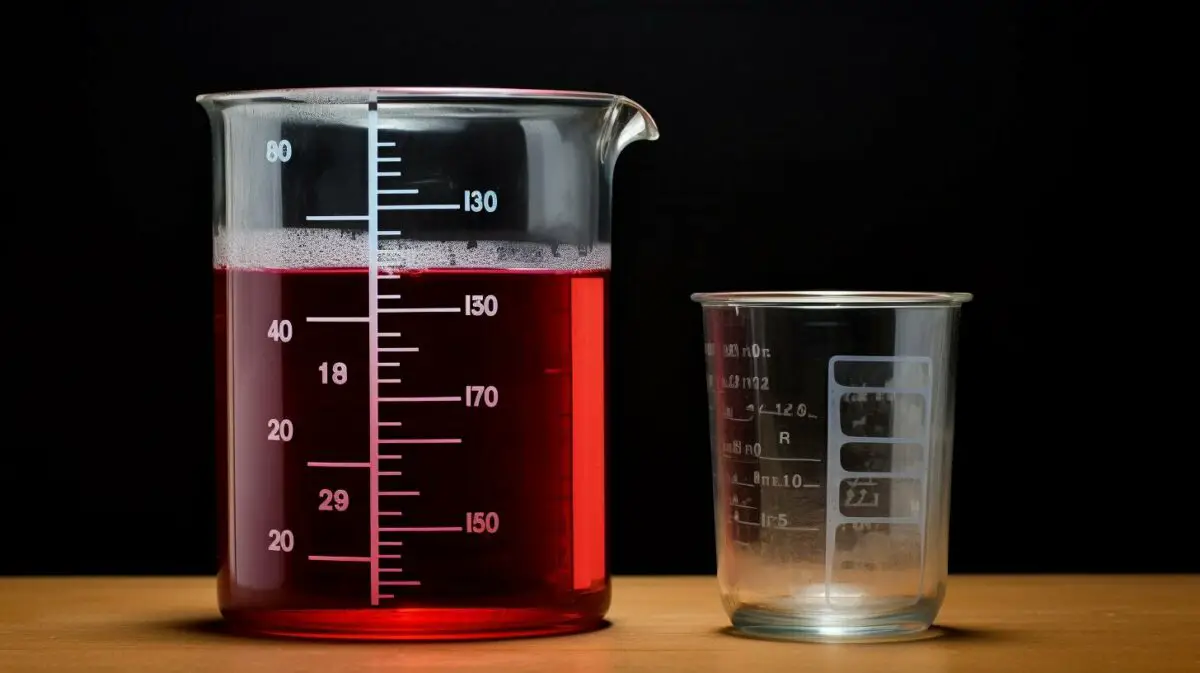
Converting cups to milliliters is an essential skill for any home cook or baker. By using these easy techniques and having handy conversion charts or tables, you can ensure accurate measurements and achieve delicious results in your recipes.
Exploring Other Cup Equivalents
Cups aren’t the only unit of measurement in the kitchen—I’ll walk you through the conversion ratios for tablespoons, teaspoons, ounces, pints, quarts, and gallons. These measurements come in handy when following recipes or modifying them to suit your needs. Let’s dive in!
When it comes to smaller measurements, tablespoons and teaspoons are frequently used. One cup is equal to 16 tablespoons or 48 teaspoons. So if a recipe calls for half a cup of an ingredient, you can use 8 tablespoons or 24 teaspoons instead.
For larger quantities, ounces and pints are commonly used. One cup is equivalent to 8 fluid ounces or 16 tablespoons. If you’re working with a recipe that requires a quart of liquid, you’ll need 4 cups. And if gallons are involved, keep in mind that there are 16 cups in a gallon.
To make it easier for you to visualize these conversions, here’s a handy table summarizing the cup equivalents for different measurements:
| Measurement | Equivalent to 1 Cup |
|---|---|
| Tablespoons | 16 tbsp |
| Teaspoons | 48 tsp |
| Ounces | 8 fl oz |
| Pints | 1 pt |
| Quarts | 1 qt |
| Gallons | 1 gal |
So the next time you’re in the kitchen and need to convert between different units of measurement, refer back to this guide. Whether you’re measuring tablespoons, teaspoons, ounces, pints, quarts, or gallons, you’ll be equipped with the knowledge to successfully navigate your recipes. Happy cooking!
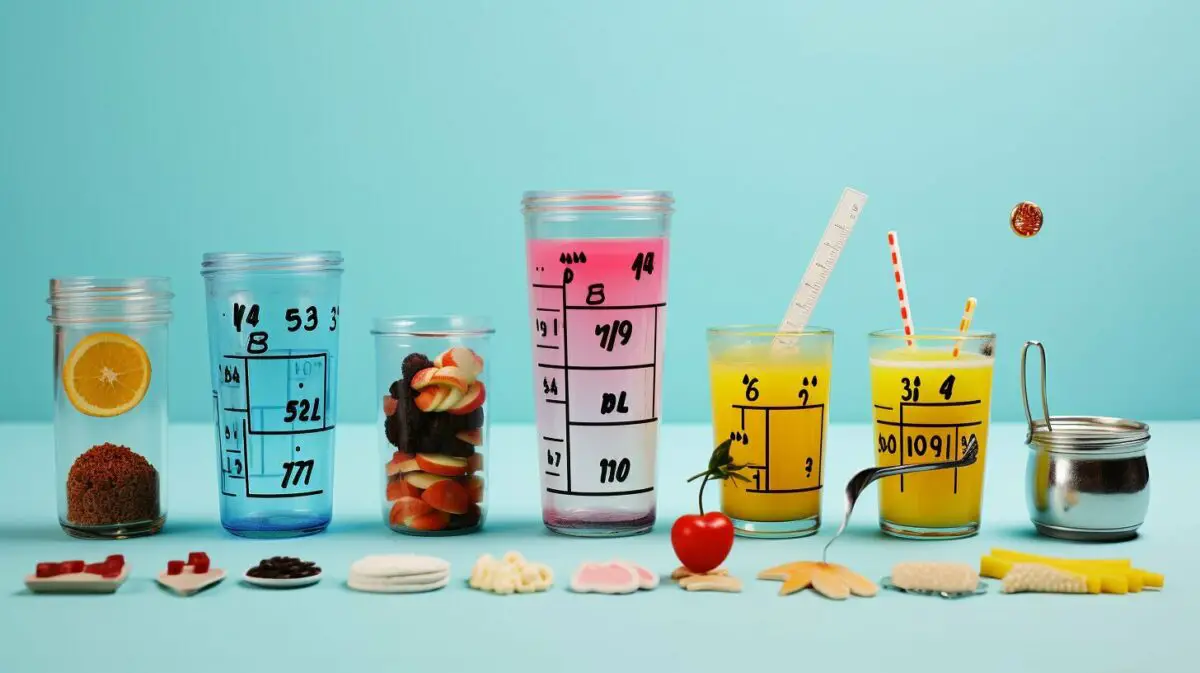
To fully master measurement conversions, it’s essential to understand the relationship between metric units, such as milliliters, grams, and liters, and their connection to cups. In the metric system, milliliters are used to measure liquid volume, while grams are used to measure the weight of solids. Liters, on the other hand, are used to measure larger quantities of liquid.
When it comes to converting metric units to cups, it’s important to remember that 1 cup is equal to 237 milliliters. This conversion is crucial when following international recipes that utilize the metric system. For example, if a recipe calls for 500 milliliters of water, you would need approximately 2 cups.
| Metric Units | Cups |
|---|---|
| 1 milliliter | 0.004 cups |
| 100 milliliters | 0.42 cups |
| 250 milliliters | 1.06 cups |
| 500 milliliters | 2.11 cups |
Converting grams to cups can be a bit trickier since it depends on the density of the ingredient being measured. For example, 1 cup of water weighs approximately 237 grams, while 1 cup of flour weighs around 125 grams. It’s always a good idea to consult a conversion chart or use a kitchen scale for accurate measurements when converting between grams and cups.
By understanding the relationship between metric units and cups, you’ll be able to confidently navigate international recipes and achieve accurate measurements in the kitchen.

Congratulations! You’ve now mastered the art of converting between cups and milliliters, making your kitchen adventures even more enjoyable and precise.
In American English, there are 237 milliliters in a cup, which is an essential conversion to know when using international recipes from countries that utilize the metric system. Understanding the history and origins of cup measurements, introduced in the United States in 1896 by Fannie Farmer, adds a fascinating backstory to your culinary knowledge.
Handy conversion charts come in handy when converting between metric measurements and cups or fluid ounces, ensuring accurate results in your recipes. It’s important to note that U.S. liquid cups and U.S. dry cups have different measurements, with dry ingredients requiring specific dry measuring cups.
Exploring the variations in cup measurements across different countries, such as the differences between the United States, the United Kingdom, and others, provides insights into how culinary traditions vary around the world.
Finally, a standard U.S. liquid measuring cup holds 8 fluid ounces, equivalent to 236.5 milliliters, providing you with a reliable and consistent measurement tool in your kitchen.
FAQ – How Many Milliliters in a Cup
Q: How many milliliters are in a cup?
A: There are 237 milliliters in a cup. This conversion is important when using international recipes or when dealing with metric measurements.
Q: When was the cup measurement introduced in the United States?
A: The cup measurement was introduced in the United States in 1896 by Fannie Farmer.
Q: Are there differences between U.S. liquid cups and U.S. dry cups?
A: Yes, there are differences. U.S. liquid cups are used for measuring liquids, while U.S. dry cups are used for dry ingredients. It’s important to use the appropriate measuring cups for accurate measurements.
Q: How do cup measurements vary between the United States, the United Kingdom, and other countries?
A: Cup measurements can vary between countries. The United States uses a different cup measurement than the United Kingdom and other countries. It’s important to be aware of these differences when using international recipes.
Q: How much does a standard U.S. liquid measuring cup hold?
A: A standard U.S. liquid measuring cup holds 8 fluid ounces, which is equivalent to 236.5 milliliters.
Our Friends:
- https://www.thespruceeats.com/recipe-conversions-486768
- https://bakeitwithlove.com/milliliters-ml-in-a-cup/
Related Recipes:
 How Many Cups Are in a Liter: Unlocking the Mystery
How Many Cups Are in a Liter: Unlocking the Mystery
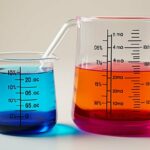 How Many Milliliters in an Ounce? (Perfect Measurement Conversion Guide)
How Many Milliliters in an Ounce? (Perfect Measurement Conversion Guide)
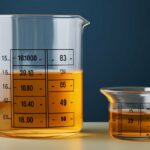 How Many Milliliters in a Quart? (Perfect Measurement Conversion Guide)
How Many Milliliters in a Quart? (Perfect Measurement Conversion Guide)
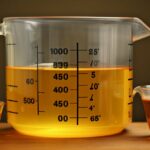 How Many Ounces Are in 750 ml? (Measurement Conversion Guide)
How Many Ounces Are in 750 ml? (Measurement Conversion Guide)
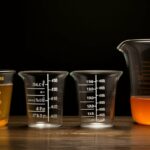 How Many Milliliters in a Pint? (Measurement Conversion Guide)
How Many Milliliters in a Pint? (Measurement Conversion Guide)
 How Many Ounces Are in a Pint? (Perfect Measurement Conversion Guide)
How Many Ounces Are in a Pint? (Perfect Measurement Conversion Guide)
 How Many Fluid Ounces in a Cup? (Perfect Measurement Conversion Guide)
How Many Fluid Ounces in a Cup? (Perfect Measurement Conversion Guide)
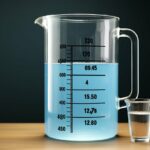 How Many Milliliters in a Gallon? (Perfect Measurement Conversion Guide)
How Many Milliliters in a Gallon? (Perfect Measurement Conversion Guide)


